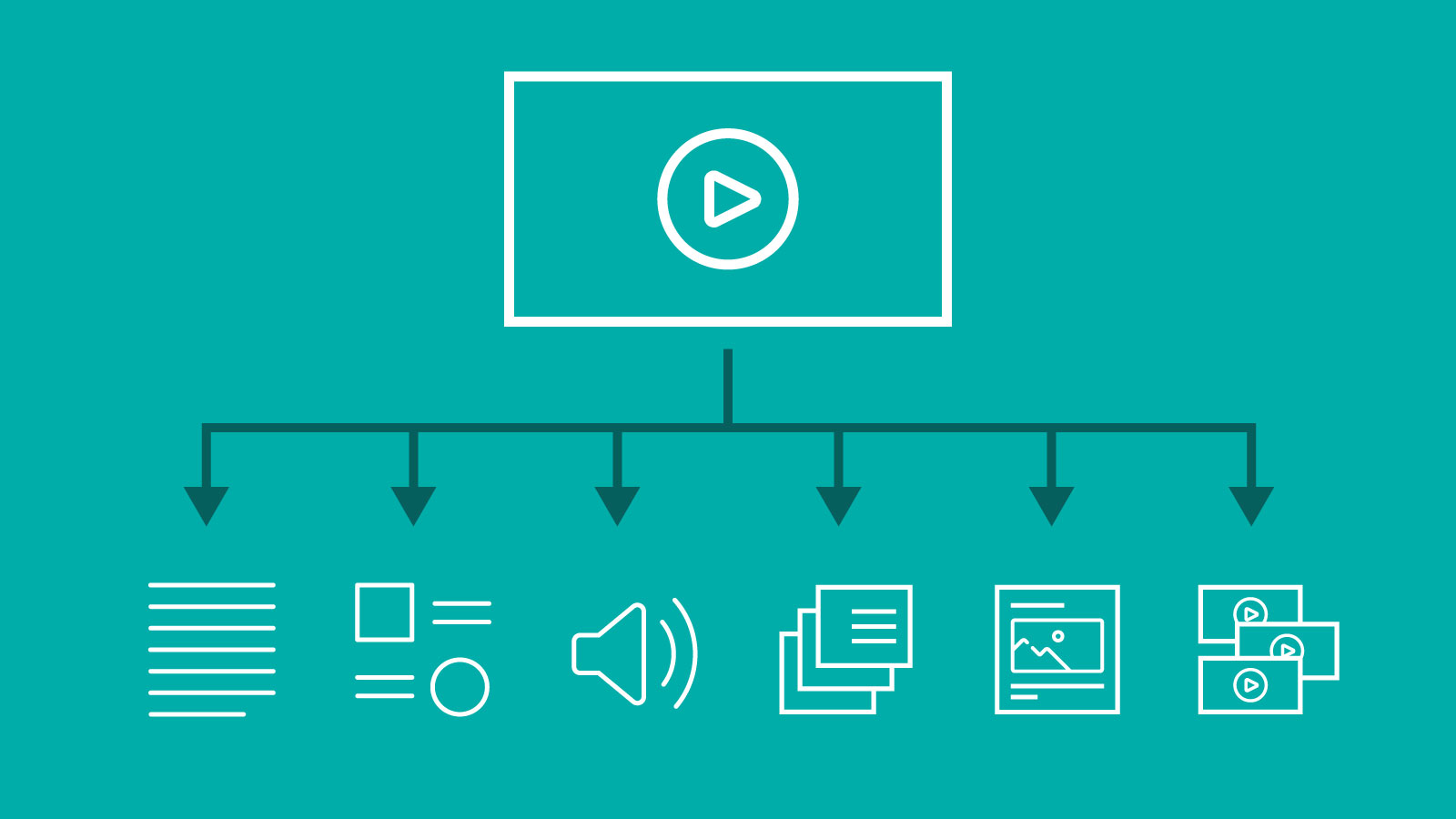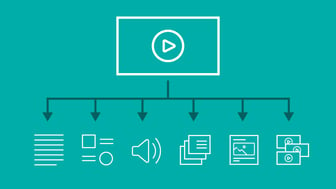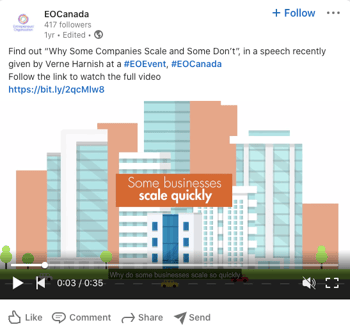
Atomization: Breaking It Down.
More than any other group, associations have captured audiences with specific needs and access to a wealth of information. That said, resources are often tight, and you need to make the most of each content source. Additionally, your audience members consume content differently - some listen to podcasts, others prefer articles or infographics, and many enjoy videos.
One strategic opportunity to extend and diversify your content is through atomization.
Now, what does ATOMIZE actually mean? At its core, atomization is breaking something down into tiny pieces (like, y’know, atoms). This is taking longer pieces of content and creating new, smaller pieces for distribution. You don’t want to release the same presentations year-round. Instead, transform them into something new that will give your members added value.

How can you use this to your advantage?
Atomization helps you take your existing content (whether it be a presentation, video, webinar, or blog post) and turn it into new pieces of content in new formats. In other words, take your live webinar and transform it into a recorded on-demand offering, a series of social media posts, and an infographic that you can use for an extended period of time. This is especially useful when you are hosting a virtual event.
For example, at Association TV, we have a model that we use to turn one long presentation into several other content pieces. We call it, Conference-All-Year-Long (CAYL).
After recording a conference session or webinar...
- The full-length video is polished by adding in the presentation slides and cutting out any presenter issues during the live recording.
- The session slides are turned into a PDF for those who would like to download and read them.
- The audio from the presentation is turned into a recording for members to listen to at their convenience, like a podcast. This will sometimes include the addition of a host introduction and closing statement.
- A microlearning video is produced from the full video, highlighting some of the most critical aspects of the presentation. This includes the addition of some voice over sections and b-roll to tell the whole (but condensed) story.
- A blog post or article is generated from the content.
- A social media video is created with the best 30-45 seconds of the microlearning video.
This system creates six resources for your audience from a single source of information. You can use this wealth of content to draw in and engage a much larger audience and provide them with multimedia options.
This atomization can also be used to promote content, drive traffic to your website, and improve recruitment.
As an example of how this funnel can work...
- View the full presentation
- Download the presentation slides
- Listen to the audio recording of the presentation slides
- Visit the blog post based on the presentation
By adding gated access to this full-length content, you reinforce member-value and drive lead generation. This funnel of multimedia helps with recruitment and lead generation for non-members and creates a path for your members to discover more content. You can also monetize this mode
l with sponsorship and advertising on the assets and gating access for members only or pay-per-view. In summary, this model shares your material with a broader audience and can drive awareness and conversion with prospective members, effectively increasing your recruitment, retention, and revenue.
Check out this example from EO Canada:
Creating new content from your existing resources is an excellent way to grow your audience and build a robust content strategy for engaging your members. Like the conference session example above, we suggest starting with video.
Video projects typically begin with scripting or a graphics package (think, your logo, and how that will animate on screen). Next is the VO. And finally, the finished video is created. In this order, you are creating assets as you go. A script can easily be transformed into a magazine article. Graphics for the video can be used to make an infographic. Reformat the VO, and you have a podcast. Reversing this process is far more complicated.
Atomizing your content, whether you start with video or not, will keep your members engaged on multiple platforms. Take advantage of this strategy and start using your assets to their fullest potential.
--
For more information on atomization strategies, check out Ernie Smith's excellent blog post about the topic detailing five strategies for events. You can find it HERE on AssociationsNow.com.
Learn more about the Conference All Year Long model and how Association.TV can help you create an engaging content strategy HERE.

